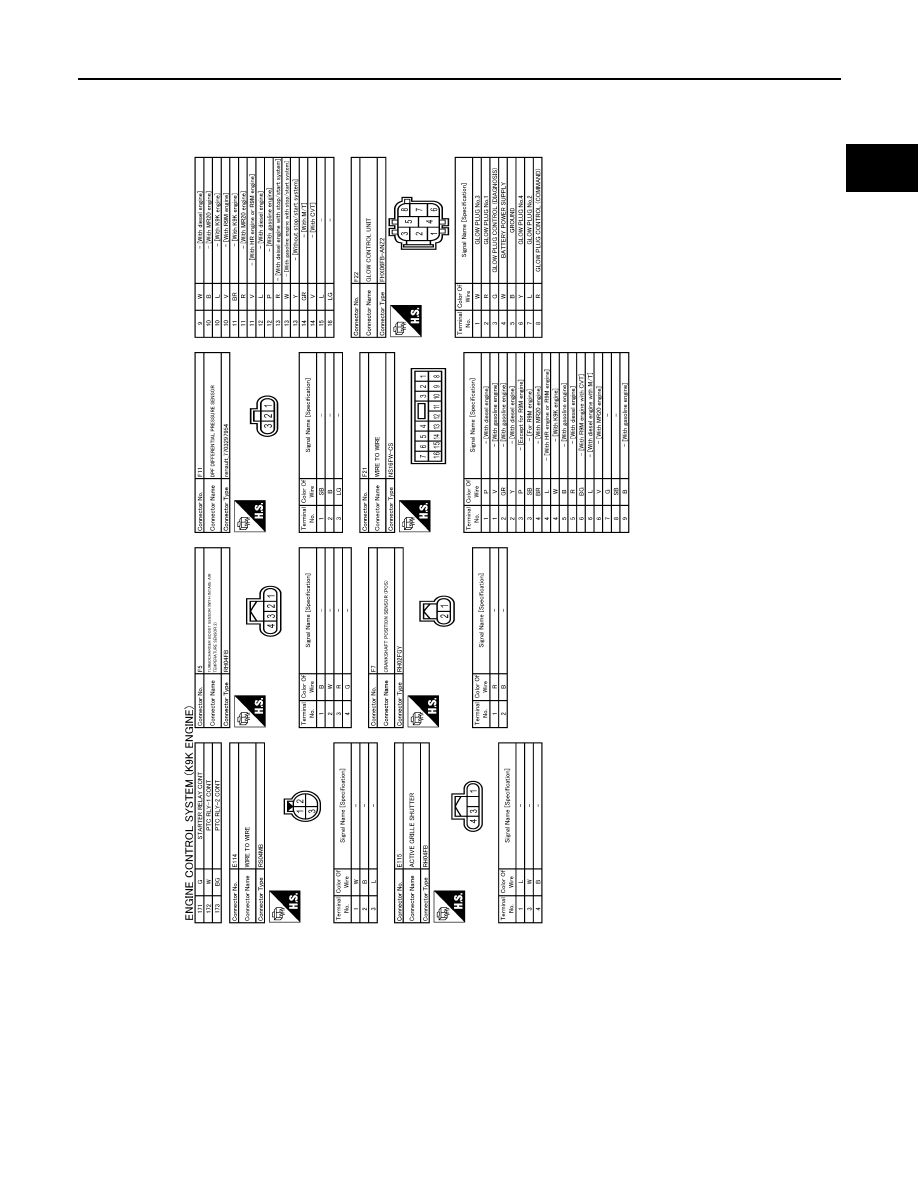Qashqai J11. Engine control system (K9K) - part 8

ENGINE CONTROL SYSTEM
ECK-113
< WIRING DIAGRAM >
[K9K]
C
D
E
F
G
H
I
J
K
L
M
A
ECK
N
P
O
JRBWC6856GB
|
|
|

ENGINE CONTROL SYSTEM ECK-113 < WIRING DIAGRAM > [K9K] C D E F G H I J K L M A ECK N P O JRBWC6856GB |